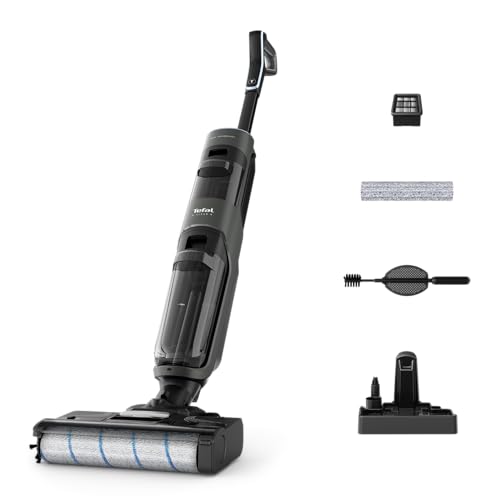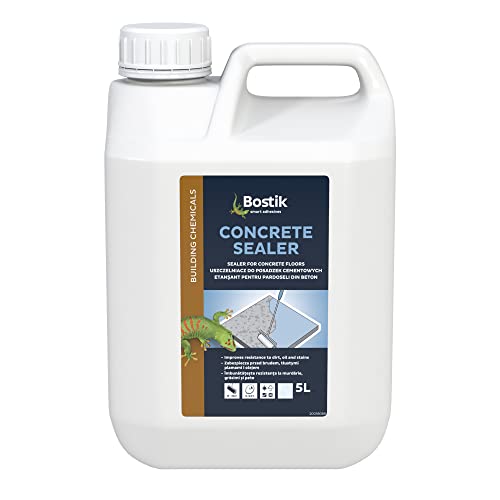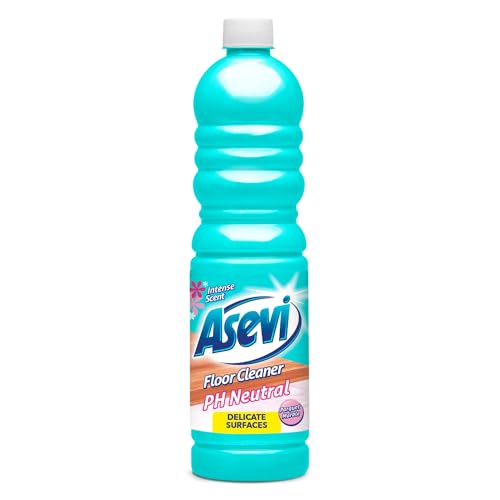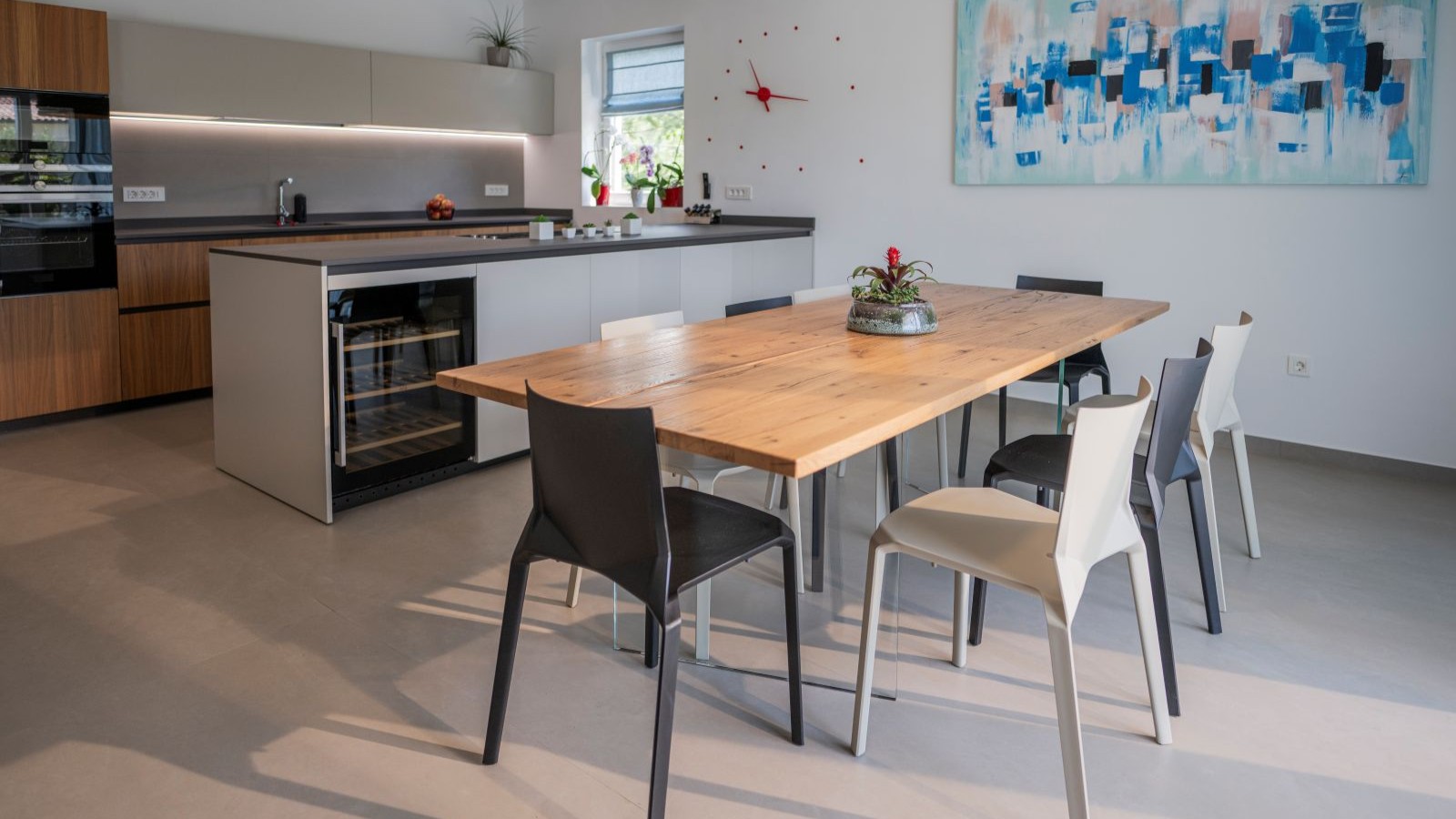
To the untrained eye, polished concrete and microcement flooring appear similar. Both of these hard floor surfaces are easy to clean, should withstand significant wear, and can lend a contemporary, industrial-tinted aesthetic to living spaces.
Look more closely you’ll start to notice significant differences between the two types of flooring, from their ease of installation and versatility throughout the home to their aesthetics and longevity.
We interviewed a hard floor installer and an architect to find out the pros and cons of these two popular flooring materials. If you’re weighing up polished concrete vs microcement for your floor, this article is here to help you make an informed decision.
Polished concrete vs microcement: Composition
Polished concrete floors are of ancient origin, although the material achieved new popularity in domestic contexts in the 20th century. Favoured by postmodernist architects including Tadao Ando and Zaha Hadid, the material has become a byword for understated sophistication.
Concrete is made from a mixture of cement, sand and water (sometimes with application-specific additives, such as chemical densifiers for polished concrete floors). These materials set hard when mixed and left to dry. The set surface is polished through a sequence of grinding, buffing and treatment processes which ultimately create a smooth and smart-looking floor.
Microcement is a newer material, invented in the mid-20th century and rarely used in European homes until the 1980s. It’s made up of cement, fine aggregates and polymers. To form a floor surface, it is built up in multiple thin coats over a subfloor such as screed. The final thickness of the microcement floor is as little as 2-3mm.
“It has been around for a while, but iterations have changed over the years,” says Simon Heslop, owner and MD of DirectStone Ltd.. “The Forcrete brand microcement we use is fully waterproof, epoxy based and sealed in wax, so it becomes a very stable finish.
Bring your dream home to life with expert advice, how to guides and design inspiration. Sign up for our newsletter and get two free tickets to a Homebuilding & Renovating Show near you.
This is a marked improvement over some earlier microcement products.
“In the old days you used to seal it, and when the sealant degraded the surface would start to get marked,” says Heslop. “Now that it’s epoxy-based, every layer is waterproof and it’s much harder.”
Microcement flooring is used in some of the same contexts as polished concrete flooring, although the two materials have distinct strengths and weaknesses.

Simon Heslop is the owner and managing director of DirectStone Ltd, a Bedford-based company which specialises in polishing and laying concrete and microcement floors, as well as restoring stone flooring. Heslop has spent over 20 years leading this family-run business.
Polished concrete vs microcement: Cost and ease of installation
If you’re able to pour it to the required depth of around 100mm, concrete tends to require minimal subfloor preparation, as it is not greatly affected by the underlying material (technically known as the ‘substrate’) provided this is solid and compacted. This removes one of the costliest and most significant obstacles to laying a new hard floor.
“Concrete can form part of the structural ‘sub floor’ make up of the floor, meaning you would omit using concrete below the insulation and screed above,” says Chris Lawson, Managing Director of CK Architectural. “Like microcement flooring with underfloor heating, polished concrete is also compatible with underfloor heating.”
Microcement is more sensitive to its substrate, and usually requires a perfectly smooth and level subfloor to be laid directly beneath where it will be applied.
“It can be put over very stable tiles that have no cracks or movement – but if the tiles start to delaminate or move, the microcement floor is affected,” Heslop explains.
Installing either type of floor comes at significant expense (with disruption to daily life throughout the process). Cost estimates for professional microcement floor installations are currently around £140 to £160 plus VAT per square metre, while Checkatrade pegs current pricing for polished concrete floor installation at £120 to £150 p.s.m..
“Laying a concrete floor is quite an involved process, but because you’re not screeding it works out at similar price to getting a high quality wooden or tiled floor installed,” says Heslop.
“Microcement is a tiny bit more expensive because you have to factor in putting down screed or a layer of self-levelling compound before the microcement itself goes on. It needs that smooth, level surface underneath.”
Lawson concurs: “With microcement, the full subfloor would be installed and this would be an additional cost to finish, so you might have a solid concrete subfloor with four more layers added on top.”
Winner: polished concrete
Polished concrete vs microcement: Aesthetic appeal
According to Lawson, polished concrete is a versatile choice in terms of the finished floor’s aesthetic.
“The concrete can be of various different patterns and colours, and there are many effects available including marble and quartz textures,” he says. “Patterns are not always balanced and uniform, so ensure the installer guarantees the frequency of the pattern details.”
If you’re not a fan of grey floors (and plenty of people are), both polished concrete and microcement have plenty of alternative tones to offer.
“Microcement can come in pretty much any colour, including your choice of RAL colour,” says Heslop. “The producers can also copy most of the colours sold by paint brands, such as Farrow & Ball and Little Greene. Concrete is available in a lot of colours too, but not as many.”
The two materials also vary in their texture.
“There are more options with microcement as the specialist can trowel in different finishes, much like the old school renderers with Artex, Venetian plaster, tadelakt or stucco,” says Lawson. “Polished concrete generally is a high-shine, glazed, smooth finish.”
Winner: it’s a question of taste
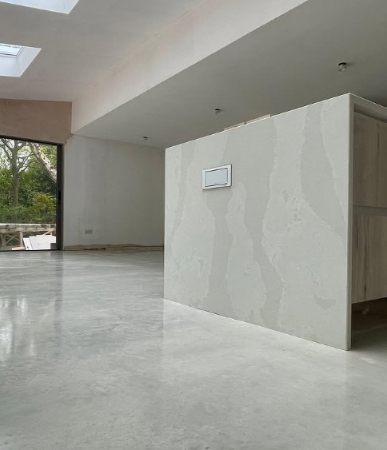
The first of the floors photographed here is microcement; the second is polished concrete. Note the textured appearance of the microcement, and how this contrasts with the polished concrete's smooth reflective surface.
Both floors were laid by DirectStone Ltd., as was the floor shown in the main image above.
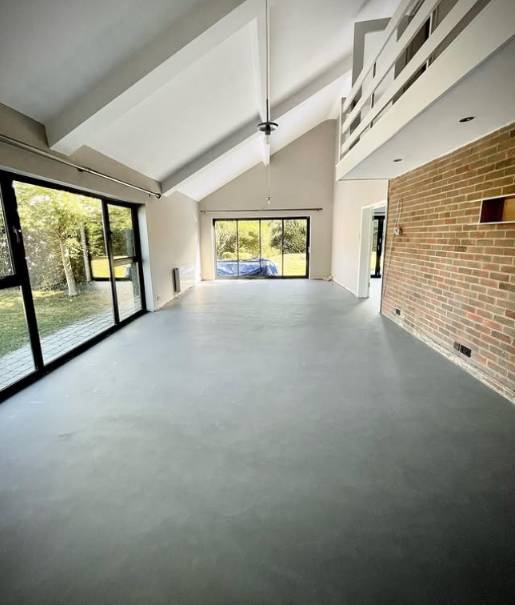
Polished concrete vs microcement: Longevity
“Because microcement is only around 2-3mm thick, it’s only as good as the screed beneath it in terms of robustness,” says Heslop. “We put a fibreglass mesh over it, but it can only hold for so long. It will last for ten years plus, as long as the screed stays stable. However, newer microcements such as the Forcrete products we use are very, very good, and I could see them lasting for 20 or 30 years.
“Ultimately, a microcement floor’s lifespan will depend on what it’s on top of, and how well it is looked after.”
A polished concrete floor will usually last far longer, subject to occasional resealing to preserve its condition.
“The concrete is 100mm thick and poured with a 6-8mm mesh within it, which is made with a steel rated at around C35,” says Heslop. “So, even if underfloor heating below the concrete causes cracks, these tend to be hairline. It’s a very durable layer.”
Winner: polished concrete
Polished concrete vs microcement: Ease of upkeep
According to Heslop, polished concrete and microcement floors are fairly similar in terms of their upkeep requirements.
“Concrete is probably a little easier to clean because it’s polished – it feels like marble – whereas microcement has more texture, so dirt or moisture can sit in the tiny depressions across its surface,” he says.
Both microcement and polished concrete floors will require refinishing from time to time, which usually involves sanding and reapplication of sealant. Heslop provides this service for both materials.
“Concrete can be refinished many times without changing appearance, whereas microcement can only be refinished a few times due to its limited depth,” he says.
Winner: polished concrete
Polished concrete vs microcement: Versatility
You can use polished concrete or microcement flooring throughout much of the home, but there are a few exceptions in each case.
“For a garage floor you’d want concrete, because it’s a solid layer rather than screed plus that thin layer of microcement,” says Heslop. “This applies especially if you’ve got heavy car traffic in and out, which would mean you’re parking and turning your wheel in one place repeatedly.”
Meanwhile, Heslop recommends microcement for areas which are often wet, such as bathrooms.
“It’s perfect for shower trays – as well as for bathroom walls – because it’s waterproof and practically stainproof,” he says. “Concrete is porous and can be marked and stained by the water when the sealant starts to wear off.”
DirectStone Ltd started offering microcement floors because customers wanted a concrete finish, but couldn’t put it in due to their existing floor materials.
“It’s perfect for renovations or refurbs where you’re not digging out your floors, because it’s a far shallower layer,” says Heslop. “On the other hand, polished concrete is my recommendation for the main floor areas of new builds under construction. In my opinion, it will last longer and has a slightly more natural look. If I were building a new house, I’d go for polished concrete in the main living areas and microcement in the bathrooms.”
This tallies with Lawson’s thoughts on polished concrete floors.
“They can be slippy when wet,” he says, “whereas microcement flooring comes in many different textures which allow for more non-slip arrangements.”
Winner: microcement

Chris Lawson is the founder and managing director of CK Architectural, an architectural design company operating nationwide. Chris and his team frequently help homeowners to convert or extend their lofts.
Shop hard floor cleaning products
FAQs
Do microcement and polished concrete look the same?
Floors of these types look fairly similar to one another, but polished concrete tends to be smoother and shinier whereas microcement typically has a more textured appearance.
Both microcement and polished concrete come in a variety of colours and finishes. Talk to your installer to agree on the ideal finished look of your flooring, whichever of the two materials you choose.
Can microcement or polished concrete flooring be installed DIY?
Whether you choose polished concrete or microcement, laying a hard floor is usually best left to a professional. Many steps of the process, from mixing the material to pouring it evenly and safely through a room, will benefit greatly from the experience and equipment of a specialist installer.
Some intrepid DIYers might consider self-installing a microcement floor in certain cases, especially where a limited area is being refloored and professional installation costs are therefore inflated. For instance, you might attempt laying your own microcement shower tray.
Getting your floors right provides the basis for your home’s aesthetics and livability. Avoid these common flooring mistakes, and take a room-by-room approach with special consideration for bedroom flooring ideas, garage flooring ideas, and so on.
Pete Wise is a freelance writer and keen DIYer from Leeds. Pete's tool reviews have featured in titles including Homebuilding & Renovating, Ideal Home and The Independent. He also writes features and news articles for publications such as The Guardian, BBC Good Food and T3. When he isn't busy writing, Pete can often be found at libraries, pubs and live music venues. He finds tile-cutting strangely zen.
